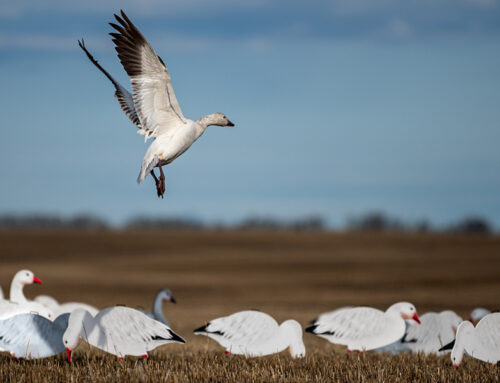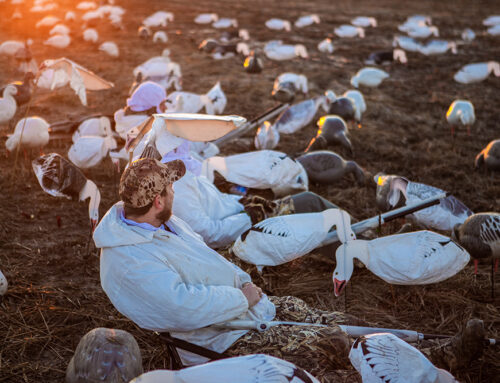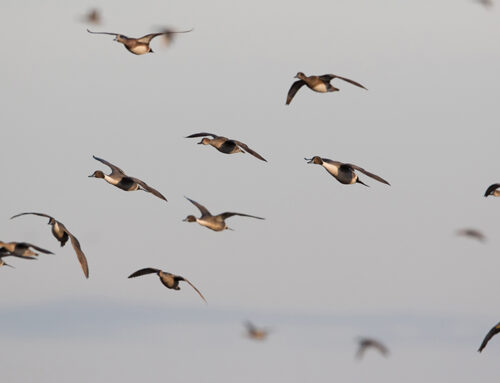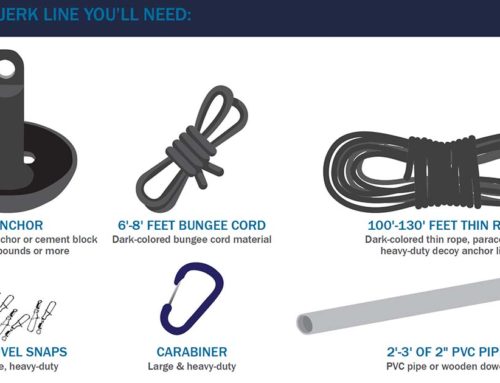How to Find the X

Practically every waterfowler knows that if you find “the X” — a magical place where clouds of ducks and geese appear on a given day — success is all but guaranteed. Find the X. Shoot ducks. Oh, if only it were truly that easy.
Many hunters only find themselves beneath the X a time or two each season, if they’re lucky. But you can boost your success rate by searching efficiently, tapping into your knowledge of waterfowl behavior and adhering to certain scouting principles.
Find High Ground
Ideally you’re already aware of the general patterns of waterfowl movements in your region. To further zero in on them, select a patch of high ground above an area known to harbor significant ducks or geese — the roost. A mountain or tall hill overlooking a river, lake, marsh or creek system is perfect. Thus, you have an excellent vantage to observe incoming or departing waterfowl. Get a sense of where the birds are headed, and then descend the slope to confirm the X’s exact location. As with all scouting strategies, a quality binocular is of great importance to this tactic.
Close Doesn’t Count
Many hunters see geese in a field, declare themselves ready to hunt and drive away. However, mere observation is less precise than one might think, and close often doesn’t cut it. We’ve all set up in the wrong corner of the right field.
Instead, wait until the birds fly from the field, and then pinpoint the exact location in which they were feeding. Feathers and droppings provide decisive confirmation. Mark the spot on your phone or GPS, and get ready for a bang-up hunt.
Determine If Birds Will Return
Scouting might lead you to the X today, but will it still be red hot tomorrow? Observe the birds closely to determine if they have a solid reason to return.
If you’ve found a raft of divers, use binoculars to identify whether they’re actively diving for food — a sign they’re likely to return. On the other hand, divers observed to be merely resting offer little guarantee of a return visit.
Dry-feeding ducks and geese offer clues as well. If they’re in the middle of the field, ample food probably remains. If they’ve worked their way to the edges, the crop might be nearly depleted and the birds could opt for a new field in the morning.
Stay Current
Waterfowl are apt to shift their patterns at a moment’s notice due to changing weather, available food and other factors. So, your scouting report needs to be timely. Scout as closely to your intended hunt date as possible, ideally the evening before. If you find the X, don’t give it a week or even a couple days — go hunting.
Make Educated Guesses
Scouting for the X can be intimidating simply because there’s so much ground to cover. But you’ve been a duck hunter all your life. Use that knowledge to narrow your search based on the conditions and past experiences.
For instance, in times of severe cold, you’re more likely to find mallards targeting agriculture fields and loafing on water nearer than normal to food sources. When searching for divers, check the lee shores of lakes and bays in heavy wind, and scour more open water on calm days.
Above all, trust your gut. A little guesswork fosters a more efficient search and might just result in a cupped-wing spectacle the next morning.






Leave A Comment